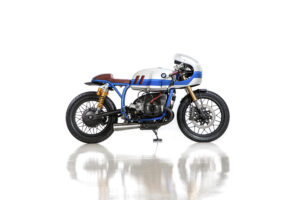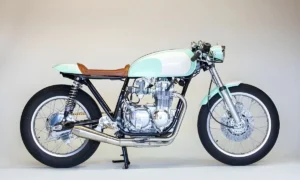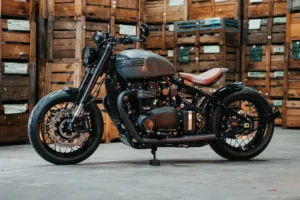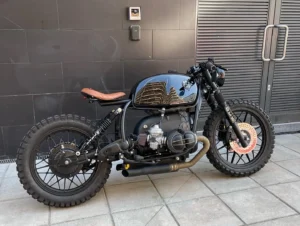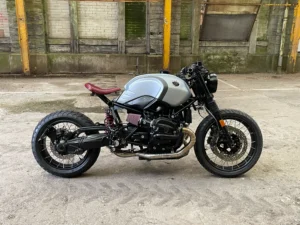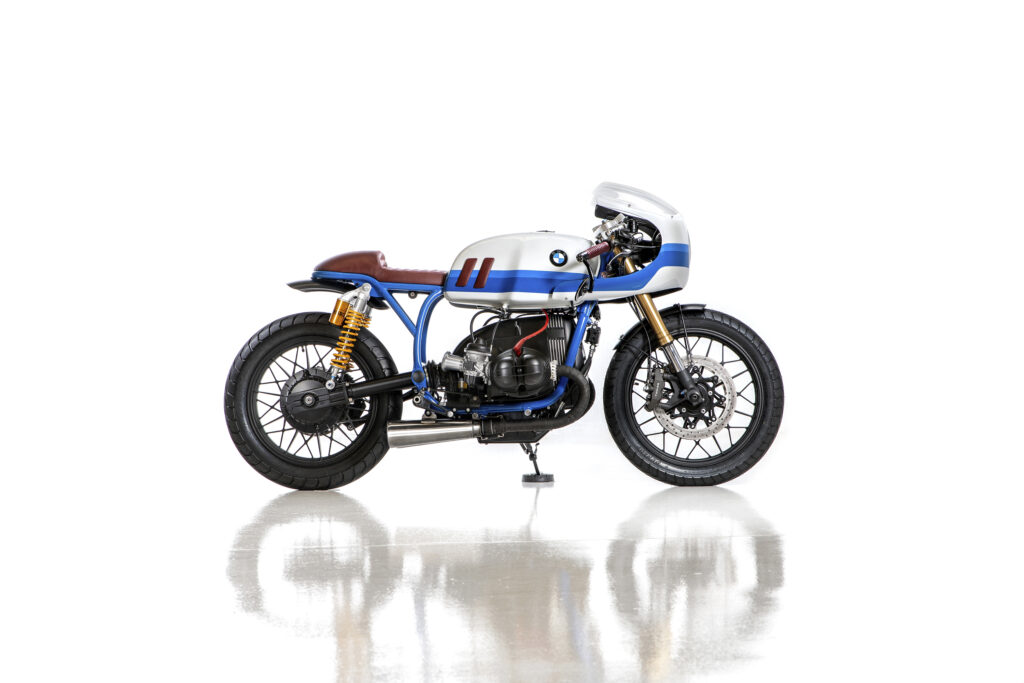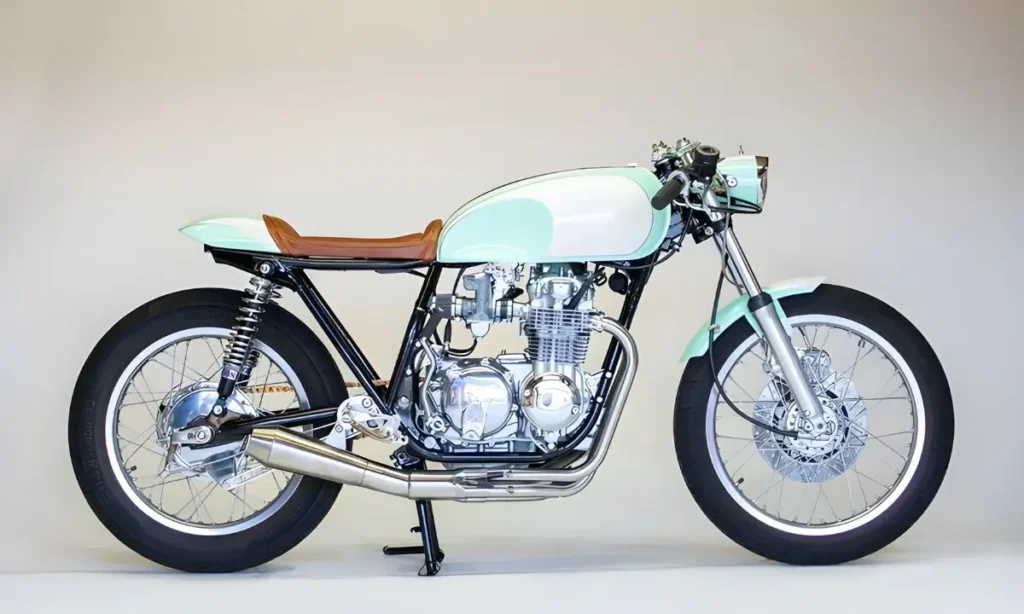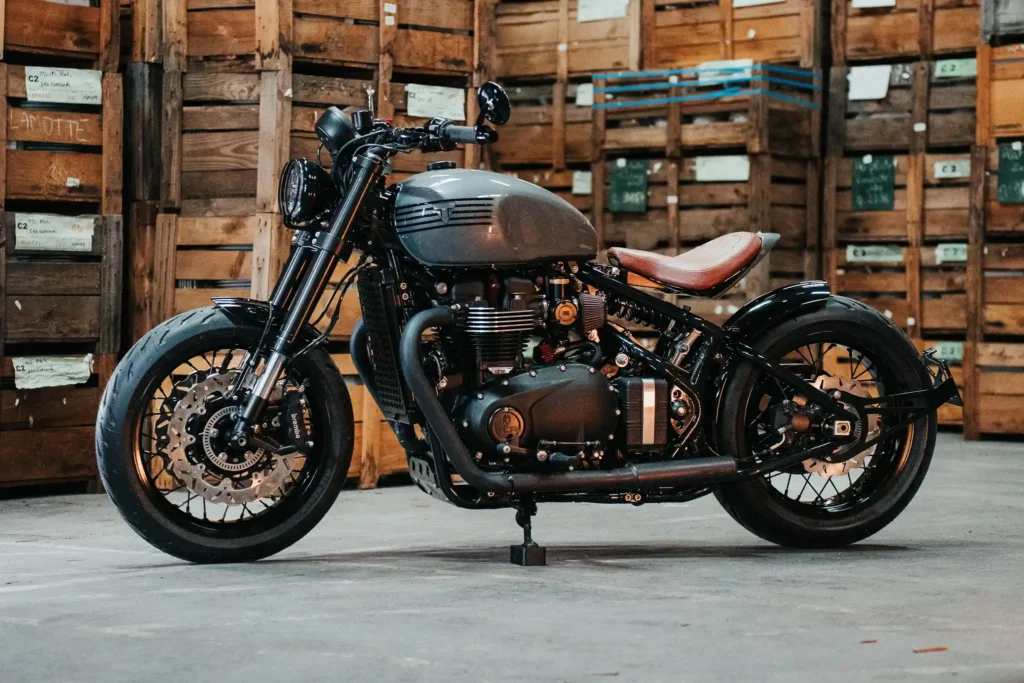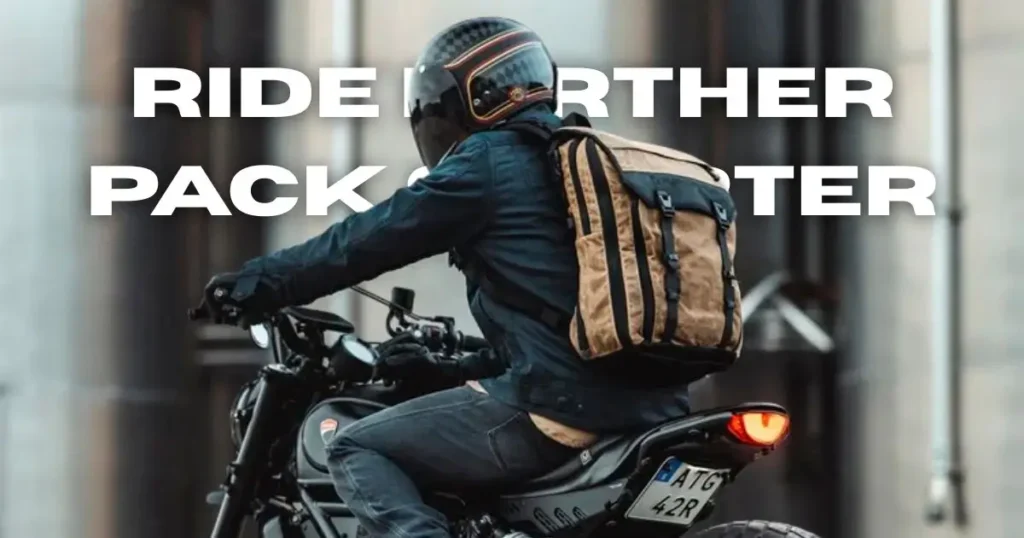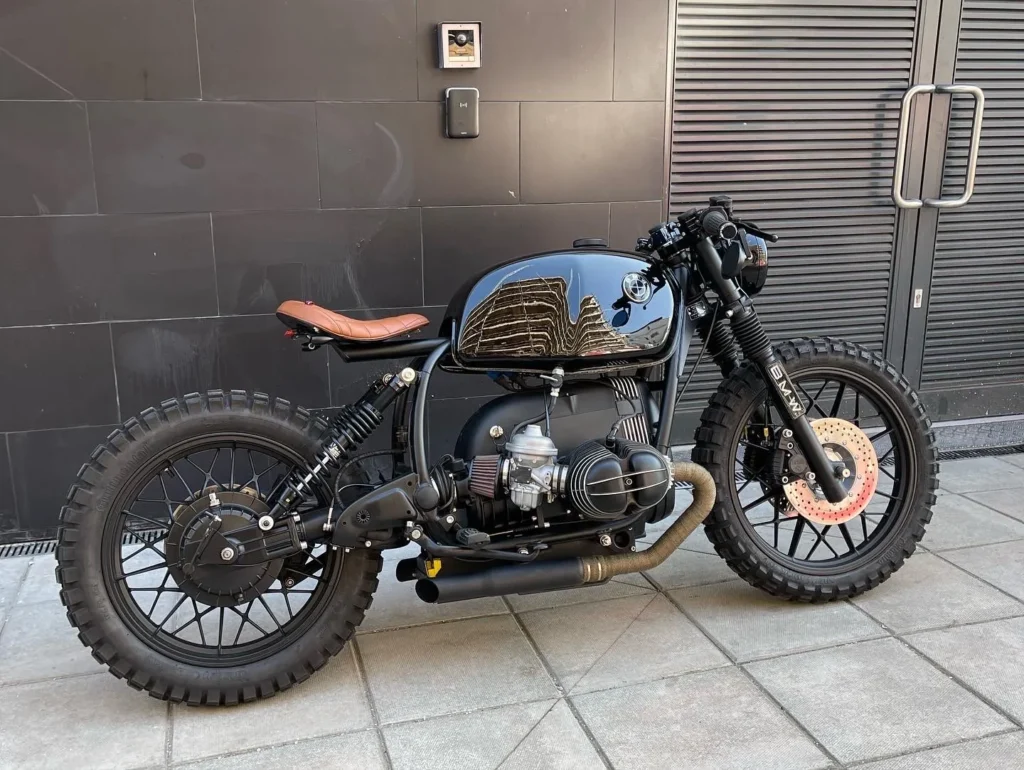Table of Contents
ToggleOverheating is a common problem in modified Honda CB café racers, especially during slow rides or in warm weather. The issue can damage your engine if not fixed in time. This guide explains the real causes behind overheating in café racer builds and how to fix them. You’ll learn how airflow, carb tuning, and engine parts affect heat levels. It also covers simple upgrades like oil coolers and electric fans. Each fix is easy to follow and fits the Honda CB series. Whether you ride a CB550, CB750, or similar model, this article gives you clear, step-by-step solutions.
Why Your Honda CB Café Racer Is Overheating: Common Causes
Poor Airflow in Café Racer Builds
Café racer designs often reduce original parts like side covers or fans. Many riders replace stock components with custom ones. These changes can limit airflow around the engine. Less airflow means less cooling. Heat builds up faster, especially at low speeds. A blocked path around the engine or tight frame space makes the issue worse.
Old or Clogged Radiator (for liquid-cooled models)
Some Honda CB models use liquid cooling. Over time, the radiator collects dirt, rust, or old coolant. This blocks the coolant flow. If coolant cannot move freely, the engine holds more heat. A damaged radiator or leaking hose also reduces cooling. Old coolant may also lose efficiency, making overheating worse.
Lean Carburetor Tuning
A lean fuel mixture burns hotter than normal. This often happens after carburetor tuning or jet changes. Too much air and not enough fuel can cause high combustion heat. Riders often tune carbs for speed or fuel savings, but incorrect ratios increase engine temperature. This issue is common in DIY café racer builds.
Faulty Thermostat or Temp Sensor
The thermostat controls when the coolant flows. If it sticks closed, coolant stays trapped and does not cool the engine. A broken temperature sensor may also give wrong readings. You may not know your engine is too hot. This can delay action and lead to more damage.
City Riding and Heat Soak
Honda CB café racers struggle in traffic. Slow speeds reduce natural air movement across the engine. Frequent stops hold heat inside. This is called heat soak. Without enough airflow, engine parts heat up quickly. Summer weather and high humidity make the problem worse.
How to Fix Overheating Issues on a Honda CB Café Racer: Step-by-Step Guide
Clean or Replace the Radiator and Cooling System
If your CB model uses a radiator, check its surface and internal passages. Dirt, rust, and debris block heat exchange. Clean the fins using low-pressure water. If the core is damaged or clogged inside, replace it. Also, flush the cooling system to remove old coolant. Use fresh coolant that matches your engine’s specifications. This helps heat move out faster.
Install an Aftermarket Oil Cooler
Oil coolers help lower engine temperature by reducing oil heat. Vintage engines benefit from this extra cooling. Choose a kit made for Honda CB models. Mount it in a position with good airflow. Use proper fittings and lines to avoid leaks. An oil cooler is effective during long rides and hot weather.
Tune the Carburetors Properly
Check the air-fuel mixture. A lean mix makes the engine hotter. Re-jet the carburetors if needed. Use a wideband sensor or plug reading to check results. Avoid guessing. Slight adjustments make a big difference. Correct tuning keeps combustion stable and reduces extra heat.
Upgrade or Add an Electric Fan
Electric fans improve cooling when airflow is low. Install a fan near the radiator or oil cooler. Use a thermal switch or manual toggle to control it. A fan helps during traffic or idling. This setup works well in custom café racer frames with tight space.
Use a Heat-Resistant Engine Oil
Choose oil with a high temperature rating. Older engines like the CB series need strong lubrication at high heat. Use oil made for air-cooled motorcycles. Avoid car oils or low-grade options. Change it regularly to keep flow and cooling performance high.
Simple Maintenance Tips to Prevent Overheating on Your CB Café Racer
Regularly Check Coolant and Oil Levels
Low coolant or oil reduces the engine’s ability to stay cool. Always check levels before long rides. Add the correct type if levels are low. Old oil also loses its ability to protect and cool. Change it on time based on riding conditions. Clean fluids move heat away from the engine faster and more safely.
Avoid Prolonged Idling in Hot Weather
Air-cooled and some liquid-cooled CB engines rely on motion for cooling. When the bike is not moving, airflow stops. Heat builds quickly at traffic lights or in slow traffic. Turn off the engine during long waits. This simple action helps avoid high internal temperatures and stress on parts.
Keep Fins and Air Passages Clear
Café racer builds often include custom bodywork. Make sure no panels block airflow. Cooling fins on the cylinder and head must stay clean. Use a soft brush to remove dirt or insects. Even small blockages reduce heat dissipation. Clear passages ensure better cooling during both city and highway rides.
Monitor Engine Temp with a Gauge
Install a temperature gauge if your bike does not have one. Some gauges replace the oil filler cap or spark plug washer. A gauge shows when heat levels rise beyond normal. This gives you time to react. It also helps you see which changes improve cooling performance.
When to Let a Mechanic Handle Your Honda CB’s Overheating Issues
Persistent Overheating After DIY Fixes
If your bike keeps overheating after basic repairs, seek expert help. Replacing oil, tuning carbs, or adding coolers should reduce the problem. If these changes show no result, deeper issues may exist. A mechanic can check things that are hard to see—like blocked engine passages, worn-out head gaskets, or internal damage. Delaying expert service can lead to permanent engine wear.
Signs of Internal Engine Damage
Watch for signs like oil turning dark too quickly, white smoke from the exhaust, or strange engine sounds. These may point to heat-related damage inside the engine. Warped parts, damaged piston rings, or cracked heads can cause long-term issues. Only trained technicians should handle internal repairs. Accurate tools and skills are needed for inspection and replacement.
Final Thoughts
Overheating is a serious issue for many Honda CB café racer owners. It affects performance, engine life, and rider confidence. Most overheating problems start with simple causes like poor airflow, wrong tuning, or low-quality fluids. Identifying the right problem helps you apply the right fix. Use basic tools, check one part at a time, and monitor results. For hard-to-find issues, ask a professional mechanic. Preventative care, regular checks, and smart upgrades will keep your bike cool and running strong. Stay alert, ride safely, and maintain your machine with care.


